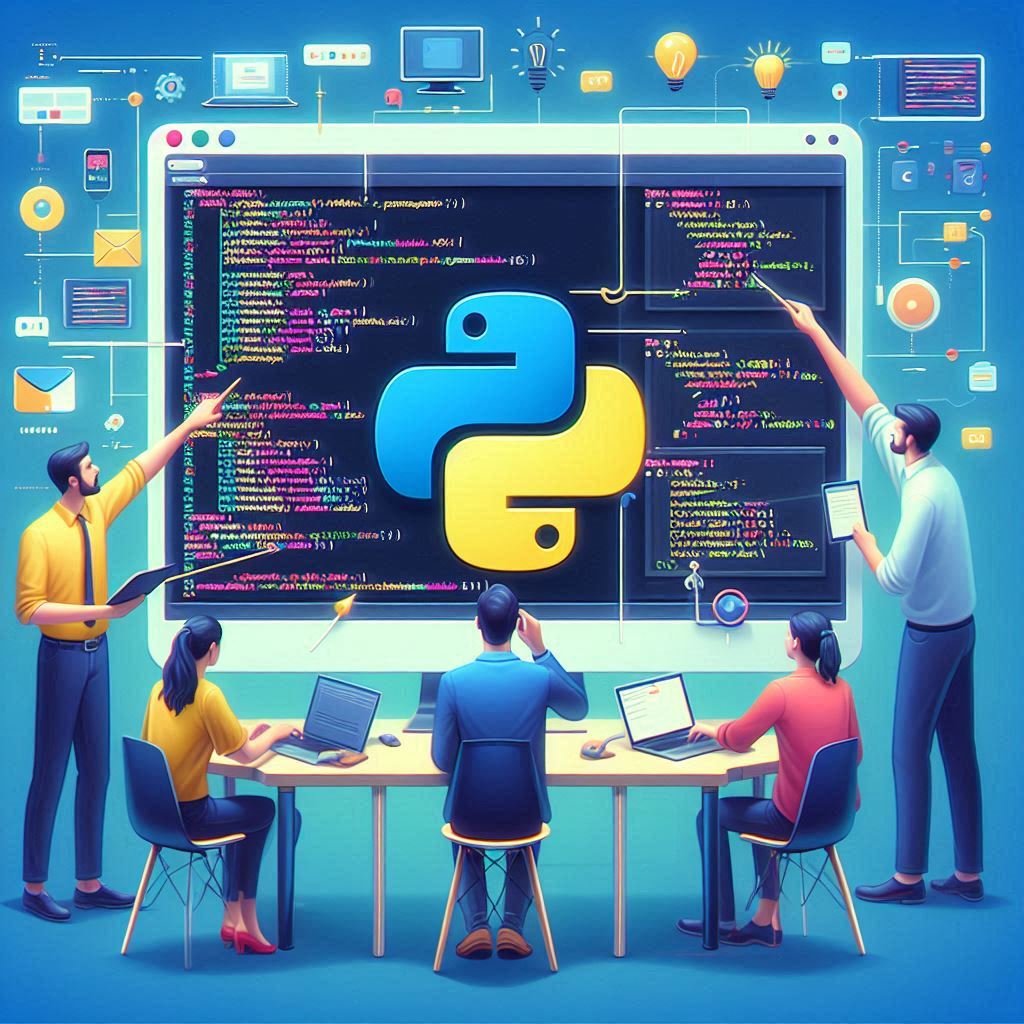Replit Python has become an essential tool for both novice and seasoned developers, significantly boosting productivity within the programming community. With the rise of online coding platforms, Replit Python seamlessly integrates into the daily routine of coding enthusiasts, offering an intuitive and efficient development environment.
At Devoner, we recognize Replit Python’s diverse features and capabilities, which play a pivotal role in enhancing development processes and driving project success. Leveraging our extensive industry experience, we provide valuable insights and strategies to help you unlock the full potential of this innovative platform.
In this blog post, we’ll delve into tips and key features for both administrators and users, ensuring a comprehensive understanding of the development process. We’ll explore the essential components of using Replit Python for software development and provide a detailed guide to maximizing its functionalities. With these insights, you’ll be equipped to develop cutting-edge, feature-rich software solutions that fully capitalize on your software development projects.
What is Replit Python?
Replit Python is the programming environment offered by Replit, an online platform that provides an integrated development environment (IDE) accessible directly from web browsers. This user-friendly environment simplifies the coding experience, making it accessible for beginners while supporting collaborative project sharing.
Replit Python offers users essential features like code autocompletion and a built-in console. Its popularity stems from its robust tech stack, incorporating standard technologies like Python, JavaScript, and Git, ensuring a smooth and powerful coding experience.
How to Use Replit Python for Software Development
Building software with Replit Python requires a solid understanding of Python fundamentals and familiarity with Replit’s IDE. Here’s a comprehensive guide to efficient coding practices, collaborative development, and seamless deployment using Replit Python:
Step 1: Define Your Tech Stack Before you start coding, it’s crucial to define and build your product’s tech stack. Consider the technologies, frameworks, and tools that align with your project requirements. Replit’s versatility supports various Python versions and frameworks, providing an excellent platform for constructing your desired tech stack.
Step 2: Sign Up or Log In Visit the Replit website, create a new account, or log in if you already have one. Signing in allows you to save and access your projects across different devices, enabling seamless work continuity.
Step 3: Create a New Repl After logging in, click the “Create” button on the Replit dashboard and choose the “Python” language option to set up a new Python environment. Repl is a lightweight online coding environment where you can write, run, and debug your Python code.
Step 4: Write and Run Your Code Use the integrated code editor to write your Python code, which supports syntax highlighting, auto-indentation, and more. You can create multiple files within the Repl for an organized project structure.
Step 5: Collaborate and Share Replit fosters a collaborative environment, enabling you to share your work with others and receive feedback. The “Invite” button allows you to invite collaborators to join your Repl.
Step 6: Use Built-in Tools Explore Replit’s built-in tools, including version control, package management, and an integrated debugger. These tools support best practices in coding and contribute to a streamlined development process.
Step 7: Deploy Your Project Replit allows you to deploy your web applications directly from the platform, making it easy to share live demos and showcase your work without needing external hosting.
Essential Features of Replit Python
Identifying your project’s specific requirements and functionalities is crucial when building software with Replit Python. These features serve as the foundation for your application and ensure optimal performance.
Admin-Side Features:
- User Management: Manage user accounts, monitor activity logs, and ensure policy compliance.
- Workspace Monitoring: Gain real-time insights into resource consumption and performance.
- Security and Access Control: Implement robust security measures and set permissions based on user roles.
- Code Review and Version Control: Review and manage code changes with version control tools.
- Custom Environment Configuration: Tailor Python environments by defining libraries and dependencies.
- Automated Testing Integration: Integrate automated testing frameworks to maintain code quality.
- Collaboration Analytics: Analyze collaboration patterns and identify key trends.
User-Side Features:
- Real-time Collaboration: Code simultaneously with others and communicate seamlessly during projects.
- Integrated Development Environment (IDE): Enjoy a user-friendly IDE with syntax highlighting and error checking.
- Project Sharing and Forking: Share projects effortlessly and fork existing ones for collaboration or personal use.
- Code Snippet Library: Access a repository of frequently used code snippets for easy integration.
- Live Preview and Output Console: View live previews and debug code in real-time.
- Task Automation: Simplify repetitive tasks with integrated automation tools.
- Learning Resources and Documentation: Access Python documentation and educational content directly within Replit.
Key Takeaway
Replit Python is an invaluable tool for efficient Python development, offering a superior coding experience. By investing in Replit, businesses and startups can develop robust applications that align with their project requirements and coding standards. Whether you’re an established business, a startup, or an individual developer, Replit Python provides the tools you need to succeed.


